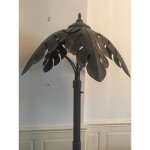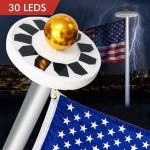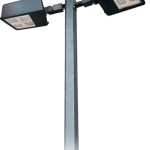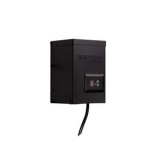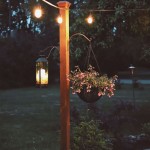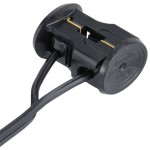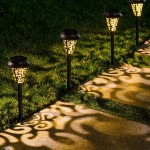Lighting Tricks For Outdoor Photography
Outdoor photography presents a unique set of challenges and opportunities for photographers. The constantly changing natural light can be both beautiful and unpredictable. Mastering the art of utilizing natural light effectively can elevate your outdoor photos from ordinary to extraordinary. This article explores various lighting tricks for outdoor photography, enabling photographers to capture stunning images in any outdoor setting.
Harnessing the Golden Hour
The golden hour, the period shortly after sunrise and before sunset, is renowned for its soft, warm light. This "magic hour" casts long shadows and creates a dreamy, romantic ambiance. The lower angle of the sun during this time results in diffused light that is less harsh and more flattering, particularly for portraits. To maximize the golden hour, plan your shoots during these times and position your subject in a way that takes advantage of the directional light. Experiment with backlighting, side lighting, and front lighting to achieve different moods and effects.
Utilizing Overcast Skies
Contrary to popular belief, cloudy skies can be an excellent source of light for outdoor photography. Overcast skies diffuse sunlight, creating a soft, even light that is ideal for portraits and landscapes. The absence of harsh shadows allows for more detail and depth in your images. This type of lighting is also beneficial for capturing details in foliage and textures, as the light is evenly distributed. However, it is essential to note that overcast skies can also make colors appear somewhat muted. To counter this, you can use post-processing techniques or adjust your camera’s white balance to enhance the vibrancy of your images.
Mastering Backlighting
Backlighting, where the light source is behind the subject, can create dramatic and ethereal photographs. When used effectively, backlighting can create a halo effect around the subject, separating them from the background and adding a sense of depth. This lighting technique can be particularly effective for capturing silhouettes, capturing the subject’s outline against a bright background. However, using backlighting requires careful exposure adjustments to avoid overexposing the background and losing detail in the subject. Experiment with different exposure compensation settings and use a reflector to bounce some light back onto your subject.
Using Reflectors for Outdoor Photography
Reflectors are essential tools for outdoor photographers, especially when working with natural light. Reflectors are portable, lightweight, and designed to reflect light back onto the subject, softening shadows and brightening up dark areas. By strategically positioning a reflector, photographers can manipulate the direction and quality of light, creating more flattering and balanced illumination for their subjects. Reflectors come in various sizes, shapes, and colors, each offering unique effects. Silver reflectors produce a brighter light, while gold reflectors create a warmer tone. White reflectors provide a neutral light, while black reflectors can be used to block unwanted light.
Understanding Exposure Adjustments
Exposure is a critical aspect of outdoor photography, and it involves balancing the aperture, shutter speed, and ISO settings to capture the right amount of light. In outdoor environments, the light can change rapidly, requiring photographers to make adjustments on the fly. Prioritize the correct exposure by considering the overall lighting conditions, the subject matter, and the desired effect. Experiment with aperture settings to control depth of field, manipulate shutter speed to capture motion or freeze action, and adjust ISO to compensate for varying light levels. Furthermore, utilizing exposure compensation on your camera can fine-tune your exposure by adjusting the overall brightness of your image.
Mastering Composition
Composition is a fundamental element of photography that impacts the overall impact of your image. Consider the rule of thirds, leading lines, and framing techniques to guide the viewer’s eye and create visual interest. The rule of thirds suggests placing your subject at one of the intersecting points of an imaginary grid, creating a more dynamic composition. Leading lines, such as roads, rivers, or fences, can direct the viewer’s eye towards the subject. Framing uses elements within the scene to create a natural border, adding depth and context to the shot. Experiment with various compositions and angles to discover what works best for your subject and lighting conditions.
Utilizing Filters for Outdoor Photography
Filters are tools that can be added to your lens to modify the light entering your camera, creating special effects and enhancing your images. Polarizing filters help reduce glare and reflections, enhancing the saturation of colors and creating a deeper blue sky in landscapes. Neutral density (ND) filters reduce the amount of light reaching the sensor, allowing you to use slower shutter speeds for motion blur effects or to capture more detail in bright light. Graduated ND filters are ideal for balancing the light between the sky and the foreground, creating more evenly exposed images. Experiment with different filters to discover their unique capabilities and enhance your outdoor photography.

How To Mix Ambient Light And Fill Flash For Outdoor Portraits

11 Outdoor Portrait Photography Tips For Easy Shots

Off Flash 5 Techniques For Dramatic Portraits Rangefinder

The Best Lighting For Outdoor Photography Focus
Indoor Outdoor Lighting Setups Simple Diagrams For Learning Photography

Creative Lighting Techniques For Portrait Photographers Rangefinder

Professional S Guide To Landscape Lighting Photography

Sunset Portrait Strobist Setup Lighting Scheme 54ka Photo Blog

The Best Lighting For Outdoor Photography Focus

Creative Lighting Outdoors With Small Flash And Gels Rogue Photographic Design
Related Posts
